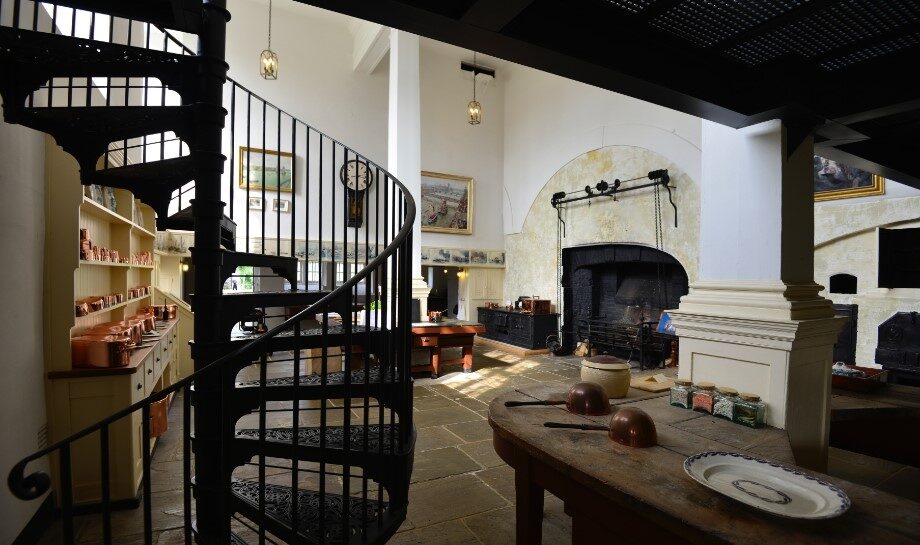

The Kitchen was in use from 1611 until the outbreak of the Second World War in 1939 when the House offered by the 4th Marquess of Salisbury for use as an army hospital.
The fireplace is original. The range, however, has been reclaimed from a Cheshire castle in order to complete the feel of the Kitchen. Many of the items here are original to the House including all the copper, which has been restored to its former glory.
The picture below shows the feast that was prepared for Victoria and other guests in 1846. A team of 25 staff worked in the Kitchen during the week of Victoria’s visit, under the supervision of Casimir Tessier, a chef from the Champagne region of France. The Kitchen would have often been the busiest, loudest and smelliest room in the House, a far cry from today’s serene scene.
This room was the province of the Still Room Maid who, under the strict supervision of the Housekeeper, would make and store jams and preserves. She often made light meals, such as breakfasts, small sandwiches and occasionally jellies. She would have also been responsible for making tea, coffee and hot chocolate, all of which were fashionable during the Victorian period.
The Pastry Room is a separate room that opens off the Kitchen. It was placed on the coolest, north-facing side of the House in order to aid the preparation of pastries, cakes and biscuits. This room would have also been used for the storage of dried goods, such as flour, sugar, and dried fruits. A small array of pastry cutters and other essential equipment can be seen in the cupboard.
This was designed to service the Kitchen. The Scullery Maid would have been responsible for all the dirty jobs such as washing up all the pots, pans and dishes, as well as scrubbing the floors and surfaces throughout the Kitchen and its ancillary rooms. When she was not cleaning, the Scullery Maid would be preparing vegetables or plucking game birds.